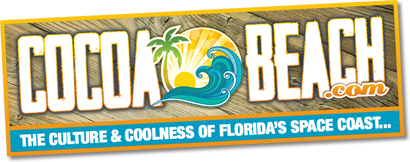PREPARING FOR LAUNCH:
Find a quiet spot in the parking lot away from the launch lane traffic. Some ramps provide lanes to “prep” the boat for the water (“make ready” area).
Remove all tie-downs except the winch hook attached to the bow eye of the boat. Remove any outboard or stern-drive tie-downs or supports. Anything that can be detached from the trailer should be placed inside the tow vehicle.
Stow needed gear and required equipment in the boat (Personal flotation devices, fire extinguisher, signaling devices, etc.). Make a thorough pre-launch check of accessories (engine compartment blower, bilge pump, lights, battery switches, etc.) to ensure they are working.
Place any maneuvering aides equipment (boat hooks, paddles, fenders, anchors, etc.) within easy reach. Store lines where they are handy. It is a good idea to secure at least one mooring line to a bow cleat.
Turn on the blower (if equipped).
Check the boat over carefully one more time. THE BOW EYE WINCH LINE SHOULD STILL BE SECURED and the engine raised, though ready to be lowered. The blower is running and must run a minimum of 4 minutes before starting the engine. Everything else is ready to launch.
AT THE RAMP:
Wait patiently in line at the launch ramp. When it is your turn, stay in a single lane! Pull your rig onto the ramp and back the trailer until the wheels are at the water’s edge. Be slow and deliberate. This boating activity requires a degree of precision developed only with practice. (Practice during low use times in a parking lot or other large area.)
The launch procedure can be accomplished solo, but it is much easier with two people. The second person signals the tow vehicle driver when the boat and trailer are in position. Place the tow vehicle in GEAR or PARK. Put the emergency brake on.
The second person can board the boat and lower the outboard or stern-drive unit to its normal operating position. Be sure the lowered unit is not touching the ramp.
The exhaust blower, on stern driven boats, must run for four minutes to clear any combustible fumes from bilge spaces. (Do this while the boat is being prepared for launch.) Sniff the engine compartment as an added precaution. If you smell gasoline fumes, DO NOT start the engine.
When given the signal, the vehicle driver backs slowly to a position where the engine’s cooling water intakes are submerged. This assures the engine will receive adequate cooling water during warm-up, so no internal damage occurs.
Start the engine. Let it warm up. This prevents the engine from stalling at critical times when leaving the trailer.
Once the boat engine is running, check to see everything is operating properly. Ease the engine into and out of reverse a couple of times. If it doesn’t stall, you are ready for the big step– backing off the trailer.
Unhook the bow winch hook. If using a fixed bunk or adjustable trailer, have the tow vehicle driver back the trailer into the water until the boat begins to float free of the bunks or bolsters. This may mean backing the tow vehicle’s rear wheels into the water. It should now be possible to shift the boat into reverse and slowly back off the trailer. If not, your helper might have to push back at the bow. If this effort does not help, have the boat driver sit in the stern of the boat while someone pushes the boat back. If none of these procedures work, the trailer and boat may need some adjustment.
A multiple-roller trailer differs somewhat in that as soon as the bow hook is released, the boat should roll off with very little effort. You need not back this type of trailer in nearly as deep as a bunk trailer. Use caution. The drive unit or outboard must remain in a slightly upright position so it will not hit the ramp as the boat rolls off the trailer.
Control the launch of a roller trailer with the boat’s forward and reverse throttle. Once off, lower the drive unit.
ON THE WATER:
Please … don’t abuse the courtesy dock areas! Courtesy docks at ramps are for loading or unloading people. Do not tie to these docks! Do not block the ramp from others who are waiting in line. Instead, quickly load additional people into the boat, then back the boat away from the ramp to await the return of the tow vehicle driver. When they return, ease to the end of the ramp dock to pick them up.
If you boat alone, pull into temporary areas away from the ramp before proceeding to park the vehicle and trailer.
RETRIEVING YOUR BOAT:
For boats with additional operators, drop off a person who is experienced in trailering to pick up the vehicle and trailer while the boat and occupants wait offshore. Do not block a ramp with an unattended boat or vehicle.
The line is formed by cars and trucks with trailers, not by boats already in the water waiting to be retrieved. Please wait your turn in line.
When first in line, back the trailer into the launch lane. The boat operator can slowly drive onto the trailer. Secure the winch hook to the bow eye. Winch the boat up to the stop and secure the winch. Be sure the boat is centered on the trailer and the lower unit is raised before pulling out.
Proceed to an uncongested area of the parking lot to further secure the boat. Use additional tie downs and support for the motors lower unit. Remove the plug to drain out any water in the boat. Do not replace the plug if the boat is to be left out in the weather.
SAFE BOATING TIPS
Beware of slippery conditions at launch areas. While onboard your boat, watch your footing. Use the correct footwear to avoid slipping.
Check the local weather forecast before going out. Watch the weather as well – be especially on the lookout for sudden storms.
Be careful about leaving children unattended in vehicles on ramps while launching. When children are aboard a vessel, they should wear a life preserver at all times. State law requires children under six years old to wear life jackets at all times while the boat is underway.
Please, use common courtesy when launching and retrieving. Wait your turn, stay in one lane, keep the water lanes clear of your waiting boat until your trailer is in the water.
Do not overload your vessel. Maintain an adequate amount of free-board at all times. Distribute weight evenly in the boat – from side to side and from bow to stern. Do not sit on or compress kapok life preservers.
Keep fire extinguisher and lifesaving equipment in good condition and ready at hand.
Always be careful with gasoline. Be sure to keep fuel lines tight and bilges clean at all times and use care when refueling. Whenever possible, motors and detachable gas tanks should be refueled when boat is at a dock or beached.
Keep an alert lookout. Watch out for swimmers who may be outside designated areas or a diver down flag.
If waves are high, head your boat at an angle toward the waves at a slow speed. Watch your wake – it might capsize a small craft or disrupt anglers in the area. If you should capsize, stay with the boat if it continues to float.
Dispose of trash properly. Remember what you take out, you should bring back. Recycle plastic, aluminum and fishing line whenever possible.
Attend a boating safety class. Free boating safety literature is available at all Commission Regional offices.
Obey the rules of the road. They are your water traffic laws.
Alcohol and boating do not mix.
It is your responsibility as a boater to know and observe the boating laws that were enacted to protect you and your family. CHECK OUT THE RULES OF THE ROAD





